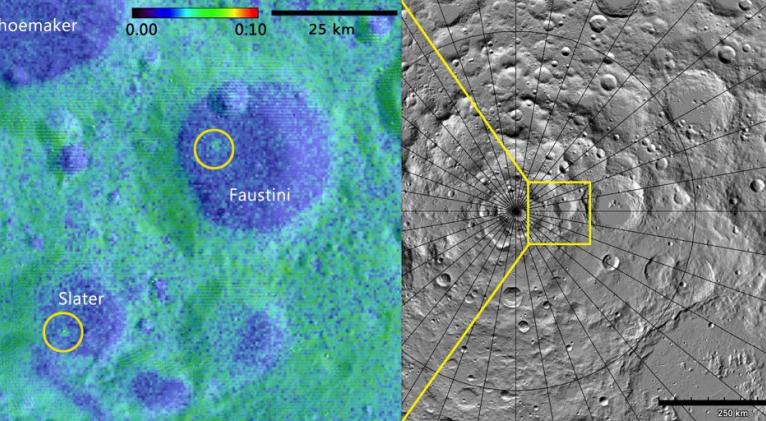New Method Helps Discover Two Young Lunar Craters
especiales

It “really captured my imagination,” Mandt told R&D Magazine. And it put her on a path towards a career in planetary science. Even while tethered to Earth, Mandt is exploring space through her involvement in NASA missions. And recently, she and colleagues discovered two geologically young craters in the moon’s darkest regions, near the south lunar pole.
“What was most exciting about this discovery was that we were able to determine an age range for the craters,” a feat difficult to achieve without collecting physical samples, said Mandt. “The Apollo samples are the only examples of times when we have been able to determine precise ages of features on the moon. Our new technique was a great discovery.”
Based on its findings, the team determined one crater was 16 million years old, and the other was between 75 and 420 million years old. That’s young for the moon, considering the celestial body was formed an estimated 4.5 billion years ago.
Pocked with craters, the moon, according to Mandt, is an ideal location for crater preservation for two reasons. First, it’s geologically inactive, which means its surface isn’t subject to fresh lava that can erase the craters. Secondly, the moon’s atmosphere is thin. “The atmosphere on the Earth is thick and erodes the surface very quickly through wind and rain,” said Mandt. “Features on the moon are not exposed to these processes so they can remain in near ‘pristine’ condition for a very long time.”
To detect the craters, the team used an instrument aboard the Lunar Reconnaissance Orbiter (LRO) known as the Lyman-Alpha Mapping Project (LAMP), developed by the Southwest Research Institute. It’s designed to detect craters that are roughly 0.75 km wide or larger. What’s more, it uses starlight and illumination produced by radiation of interplanetary hydrogen (Lyman alpha skyglow) to map the moon, and takes measurements in ultraviolet light rather than visible.
“When the LRO spacecraft is on the night side of the moon, we measure the starlight and the skyglow reflected by the surface and add these observations together to make maps of the moon’s albedo,” said Mandt. “The albedo tells us how the dust on the surface of the moon reflects ultraviolet light, which can change depending on how fluffy the dust is or if there is water ice present in the dust.”
When an object collides with the moon, the crater ejects material (ejecta) that layers the surrounding area. Initially rough, this ejecta blanket is eventually covered with layers of dark dust. Ergo, the brighter and rougher the landscape, the younger the crater.
“There may be more young craters that are smaller than our detection limit,” said Mandt. However the ones just discovered “are definitely younger than the very large craters on the south pole that create the permanently shaded regions and (are) the only young craters of this size within them.”
While the two new craters remain unnamed, the team did have the honor of naming the larger crater the 16 million-year-old crater was found in.
“We received approval from the (International Astronomical Union) to name it after the scientist who helped design the LAMP instrument,” said Mandt. The namesake is Dave Slater, a Southwest Research Institute scientist who passed away a few years ago.
Moving forward, the team hopes to utilize the detection method to explore other celestial bodies, such as Mercury, the dwarf planet Ceres, and the asteroid Vesta.













Add new comment